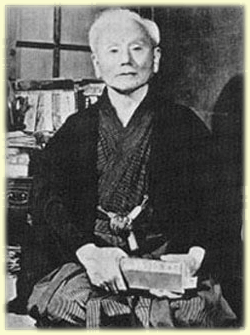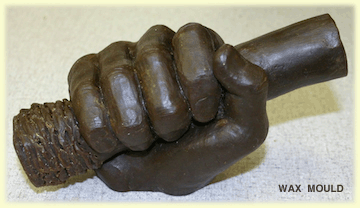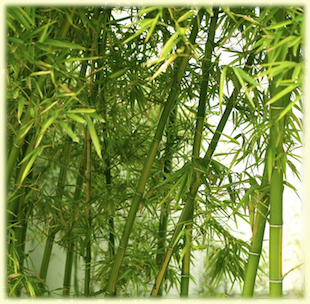|
Karate History
Karate is a Martial Art developed from the Ryukyu Islands (Okinawa) Japan in the early 20th century. It began as a common fighting system known as te or (Okinawan: ti) by the Ryukyuans. The cultural exchanges between the Japanese and Chinese in the late 14th century brought influence of the Chinese martial arts into the development of the Japanese fighting system. In the early 15th century the political centralization of Okinawa enforced the policy of banning weapons whereby the development of an unarmed combat fighting system was engaged using striking and open-hand techniques.
Upon the migration of the fighting system from the Japanese islands to the mainland, the Martial Art style was changed over by Gichin Funakosh the founder of the new named "karate-do" style called Shotokan incorporating various types of learned martial arts. The dō suffix implies that karate-dō is a path to self-knowledge, not just a study of the technical aspects of fighting which distinguishes its' style and name from other disciplines.
 By the early 1930's, Japanese militarism with China had escalated and the formal name Karate was changed from its original connotation of "Chinese Hand or Tang Hand" to "Empty Hand". Changing the name of the martial art aided in getting karate accepted by the Japanese budō organization Dai Nippon Butoku Kai. The Shotokan style today is widely known as "The Way of The Empty Hand". By the early 1930's, Japanese militarism with China had escalated and the formal name Karate was changed from its original connotation of "Chinese Hand or Tang Hand" to "Empty Hand". Changing the name of the martial art aided in getting karate accepted by the Japanese budō organization Dai Nippon Butoku Kai. The Shotokan style today is widely known as "The Way of The Empty Hand".
Gichin Funakoshi influenced the new Japanese style development through its' incorporation into educational universities in the form of Karate Clubs and outside dojos (training centers). Public demonstrations were given to introduce the martial art and promote interest in teaching and study of the art. Gichin's influence also contributed to combat training at the U.S. Okinawa military site. He is credited with the creation of several organizations, most notably, the Japan Karate Association.
Karate is recognized around the world as a true martial art, competitive sport, and defensive fighting technique that has real-world application in many forms such as self-defense, physical fitness, entertainment, fine arts, and spiritual development. This self-disciplined art takes many years of dedicated practice at mastering the art to its fullest in all its' forms and styles.
|
|
Sculpture History
Originally the sculpture process used carving (the removal of material) and modeling (the addition of material) techniques. These removal and adding techniques are still in use today but have become more modernized in technique allowing for freedom in material use and processes along with timesaving artwork making efficiency. Modern day techniques include various form molding materials using plaster, wax, or clay to produce mould castings for multiple reproductions of an original carved or sculpted artwork piece.
 Sculpture has imprinted its' 3-D visual art on all areas of the world since prehistoric times. From ancient Greece, Rome, Europe, China, Japan, India, Africa, Egypt and beyond, religious and political influences have motivated Sculptors to create masterpieces for centuries using mediums such as marble, wood, metal, glass, clay, bronze, etc. Sculpture has imprinted its' 3-D visual art on all areas of the world since prehistoric times. From ancient Greece, Rome, Europe, China, Japan, India, Africa, Egypt and beyond, religious and political influences have motivated Sculptors to create masterpieces for centuries using mediums such as marble, wood, metal, glass, clay, bronze, etc.
Modern day sculpture now embraces a wide variety of styles along with its' counterpart of ancient styles such as classic, romantic, abstract, art deco, civic, narrative, cultural, Baroque, Gothic, etc., various mixed-media and more. An open door to media and subject categories makes sculpting an ever evolving modern art and with world-wide preservation to behold in historic venues, an everlasting art engrained into world history!
True appreciation for quality sculpted art pieces comes with the understanding and realization of the Artist's intent, motivation, and meaning along with the involved art making process. This connection and perception is what sets Artists apart in the visual arts and uniquely defines their inspiration.
|
|
Bamboo History
In the plant kingdom, bamboo dates back to prehistoric times and is considered a flowering perennial evergreen existing in the grass family. Various plant varieties bloom annually and infrequently as 120 years with some varieties perishing after blooming.
Bamboo has been greatly popular among the Asian cultures such as Japan, Korea, China, Taiwan, India, etc. and has been utilized over the centuries for many uses along with symbolism and spiritual aspects. Bamboo groves grow all over the world and thrive best in tropical regions but can adapt well to various environmental conditions utilizing optimal soil, higher altitudes, tolerable temperatures, adequate sunlight and good moisture conditions.
 The bamboo plant is fast growing and yields much strength in its' natural composite material and hollowed structure making it ideal for many structural uses and cultivation. Bamboo is noted for being comparable to steel in strength with a high structural integrity in construction. While growing, bamboo can be shaped and formed for its desired use output making it highly adaptive for many imaginative uses! The bamboo plant is fast growing and yields much strength in its' natural composite material and hollowed structure making it ideal for many structural uses and cultivation. Bamboo is noted for being comparable to steel in strength with a high structural integrity in construction. While growing, bamboo can be shaped and formed for its desired use output making it highly adaptive for many imaginative uses!
Ancient and modern applications have incorporated bamboo for many uses such as architectural; building, scaffolding, and fences, sporting equipment; fishing rods, snowboards, surfboards, archery bows, and bicycles, culinary; food, leaf wrappers, and chopsticks, medicinal for infections, textile fiber yarns, papers for writing and printing, musical instruments such as the flute and in the martial arts as a stick or sword used in training techniques.
Bamboo, with its ease of environmental adaptability and many varieties for cultivation, can be readily grown indoors as well as outdoors with ease of care. This unique grass plant greenery has been used for centuries in harmonizing its visual feng shui value in landscaping and decorating! What can bamboo do for you?
|

 By the early 1930's, Japanese militarism with China had escalated and the formal name Karate was changed from its original connotation of "Chinese Hand or Tang Hand" to "Empty Hand". Changing the name of the martial art aided in getting karate accepted by the Japanese budō organization Dai Nippon Butoku Kai. The Shotokan style today is widely known as "The Way of The Empty Hand".
By the early 1930's, Japanese militarism with China had escalated and the formal name Karate was changed from its original connotation of "Chinese Hand or Tang Hand" to "Empty Hand". Changing the name of the martial art aided in getting karate accepted by the Japanese budō organization Dai Nippon Butoku Kai. The Shotokan style today is widely known as "The Way of The Empty Hand". Sculpture has imprinted its' 3-D visual art on all areas of the world since prehistoric times. From ancient Greece, Rome, Europe, China, Japan, India, Africa, Egypt and beyond, religious and political influences have motivated Sculptors to create masterpieces for centuries using mediums such as marble, wood, metal, glass, clay, bronze, etc.
Sculpture has imprinted its' 3-D visual art on all areas of the world since prehistoric times. From ancient Greece, Rome, Europe, China, Japan, India, Africa, Egypt and beyond, religious and political influences have motivated Sculptors to create masterpieces for centuries using mediums such as marble, wood, metal, glass, clay, bronze, etc. The bamboo plant is fast growing and yields much strength in its' natural composite material and hollowed structure making it ideal for many structural uses and cultivation. Bamboo is noted for being comparable to steel in strength with a high structural integrity in construction. While growing, bamboo can be shaped and formed for its desired use output making it highly adaptive for many imaginative uses!
The bamboo plant is fast growing and yields much strength in its' natural composite material and hollowed structure making it ideal for many structural uses and cultivation. Bamboo is noted for being comparable to steel in strength with a high structural integrity in construction. While growing, bamboo can be shaped and formed for its desired use output making it highly adaptive for many imaginative uses!